Top 10 Japanese Summer Foods Locals Chose on the Survey
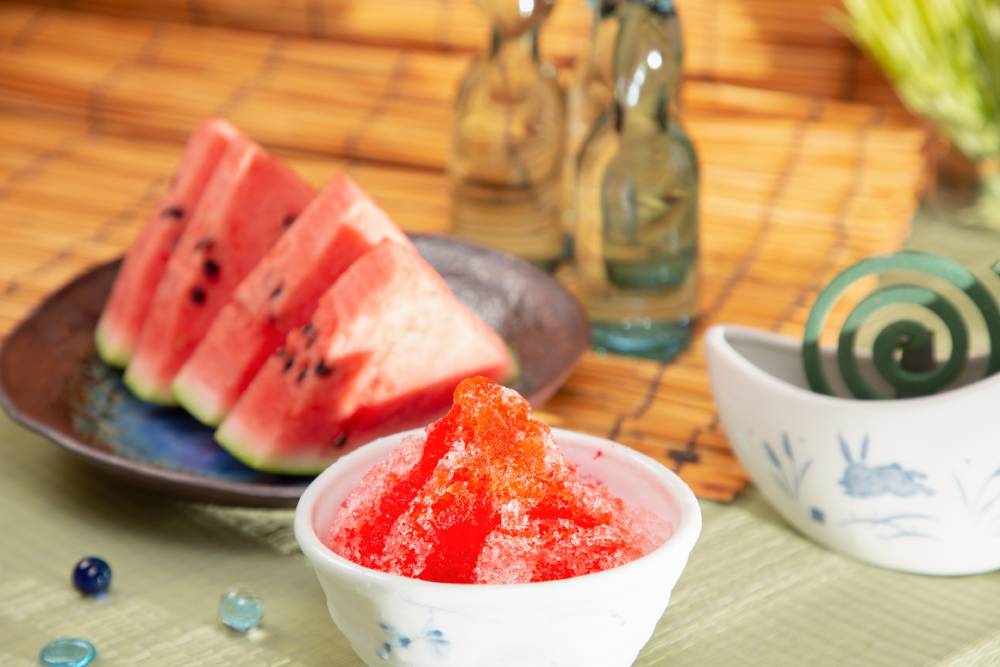

When it comes to summer, what food comes to your mind?
A survey was conducted targeting 357 people aged the 20s and 60s asking the question above. Which food Japanese locals like to have in summer? Let’s check the top 10 summer foods!
10. Japanese Jelly Noodles
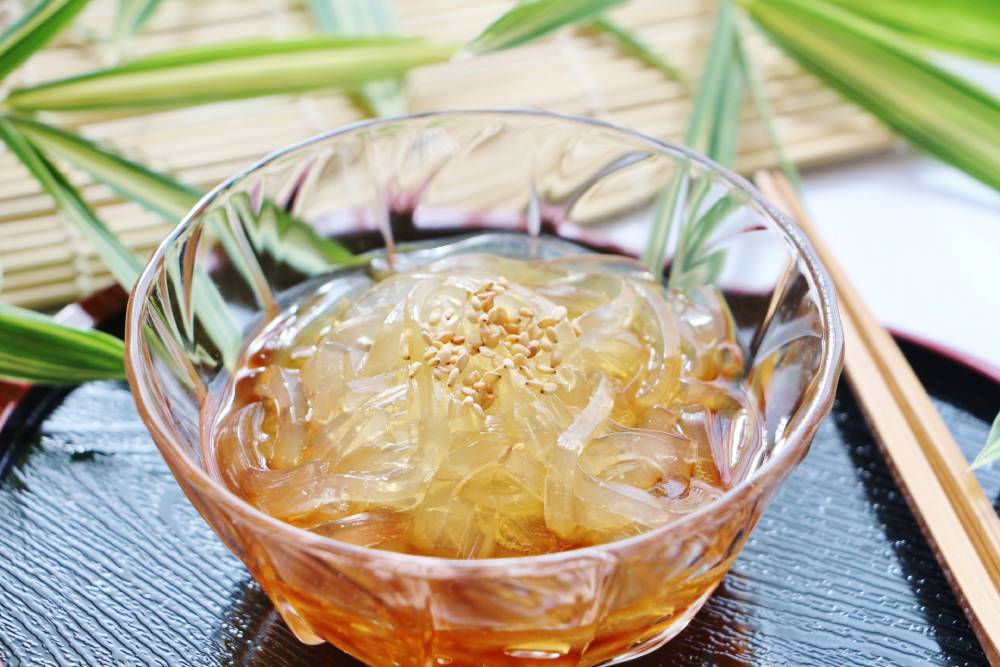
- English: Japanese jelly noodles
- Kanji: 心太
- Hiragana: ところてん
- Pronunciation: tokoroten
(Hiragana is commonly used. Kanji is not common.)
Japanese jelly noodles (“Tokoroten” in Japanese) are a cold noodle-like dish made from “kanten” cut into noodles. Kanten is made from the Japanese native seaweed, tengusa.
Tokoroten itself doesn’t really have flavors, it has a wobbly, more jelly-like texture but firmer than gelatin jelly. It’s usually served with sour sauce and “karashi (Japanese mustard). It’s low-calorie, carb-free, fat-free, and gluten-free but also high in dietary fiber.
“Tokoroten” is usually available at konjac (yam cake) section of supermarkets or grocery stores about 100 – 200 JPY.
9. Red Bean Jelly
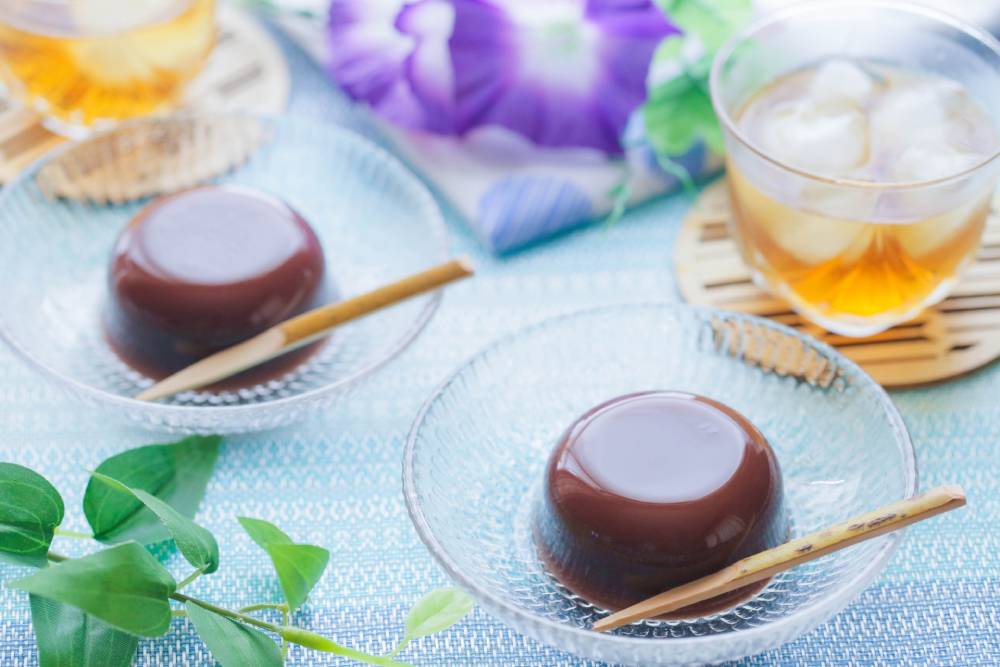
- English: red bean jelly
- Kanji: 水羊羹
- Hiragana: みずようかん
- Pronunciation: mizu yokan
“Mizu Yokan” is a type of wagashi (Japanese confection) made of red bean paste, sugar, kanten or agar, and sometimes, chestnuts. “Mizu Yokan” has a softer texture because more water is used than regular “Yokan”. It is often chilled and served during the hot summer.
Available at supermarkets, grocery stores, convenience stores, and wagashi shops. The price differs depends on where you buy it. Convenience stores or grocery stores tend to be cheaper, and wagashi shops tend to be more expensive but they usually commit to quality.
Usually sold in a block form or in a cup. A block or a cup is about 100 – 500 JPY.
8. FreshWater Eel
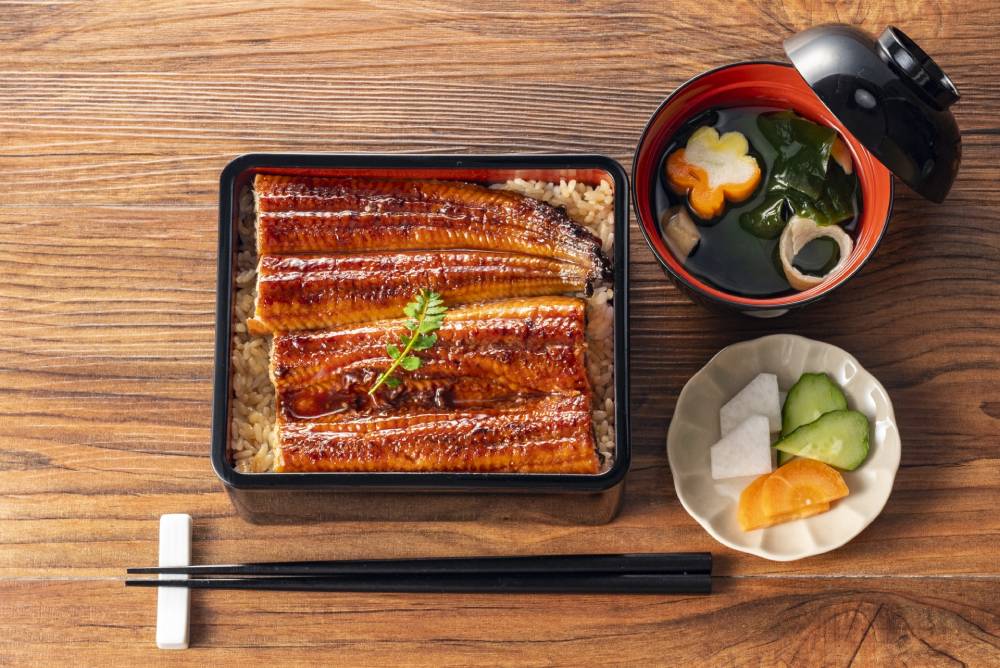
- English: freshwater eel
- Kanji: 鰻
- Hiragana: うなぎ
- Pronunciation: unagi
Eel (“Unagi” in Japanese) is a great food to boost your energy and recover your stamina during the hot summer. It is rich in vitamin A, B1, B2, D, E, zinc, calcium, DHA, and EPA.
There is a summer tradition of eating freshwater eels to keep their stamina in the summer, called “Doyo-no Ushi-no Hi (unagi day)”. People eat eel on unagi day, and there must be one or two unagi days in the summer.
Unagi tastes like firm-fleshed white fish and has a soft and fluffy texture. The common dish is “unagi no kabayaki“, charcoal-grilled eel dressed with a sweet and salty sauce.
“Unagi no kabayaki” is available at grocery stores, but fresh eel is rarely found. Although it is expensive, I recommend having it at unagi restaurants. Unagi at a supermarket costs around 2000 – 3000 JPY, whereas restaurants cost more than 5000 JPY. However, it is cooked properly by a well-trained chef and tastes totally different when it is freshly grilled. It is fluffy yet firm without a fishy or earthy aftertaste.
7. Chilled Tofu
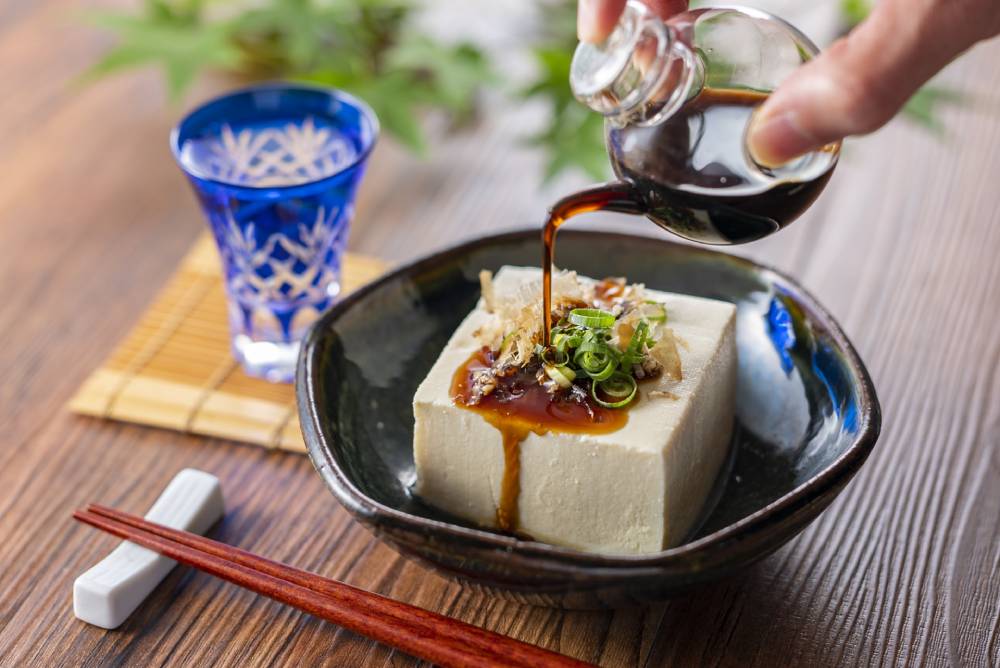
- English: chilled tofu
- Kanji: 冷奴
- Hiragana: ひややっこ
- Pronunciation: hiya yakko
Chilled tofu, called “hiya yakko” in Japanese, is usually served as an appetizer or side dish. You can just have it with soy sauce or mentsuyu (noodle soup base), or you can add some toppings. Popular toppings are grated ginger, green onion, bonito flakes, myoga ginger, and okra.
You can easily find tofu at convenience stores and grocery stores. The price is very cheap, 20 – 100 JPY. I recommend choosing the expensive ones for chilled tofu because they are more rich and silky smooth.
6. Corn
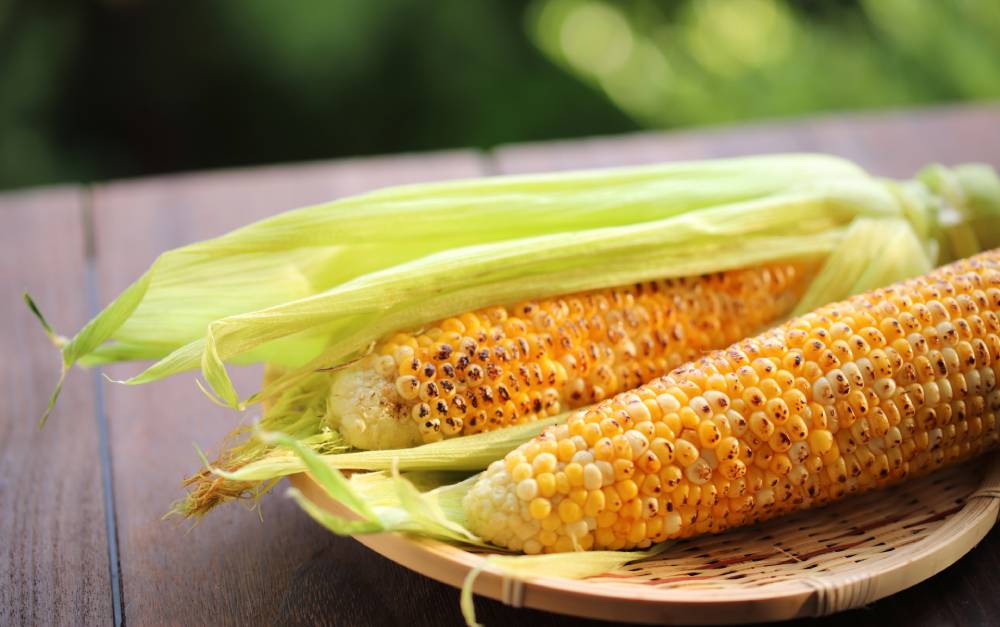
- English: corn
- Kanji: 玉蜀黍
- Hiragana: とうもろこし
- Katakana: トウモロコシ
- Pronunciation: tomorokoshi
(Hiragana or katakana is commonly used. Kanji is not common.)
Frozen or canned corn is available in any season but fresh corn on the cob is only available in summer. One popular recipe is simply boiling with salt. Another popular recipe is “yaki tomorokoshi”. It is freshly grilled corn on the cob coated with soy sauce. Add some butter. It’ll taste amazing, I promise. Here is the recipe.
An ear of corn is sold at a supermarket for about 100 yen.
5. Edamame Beans
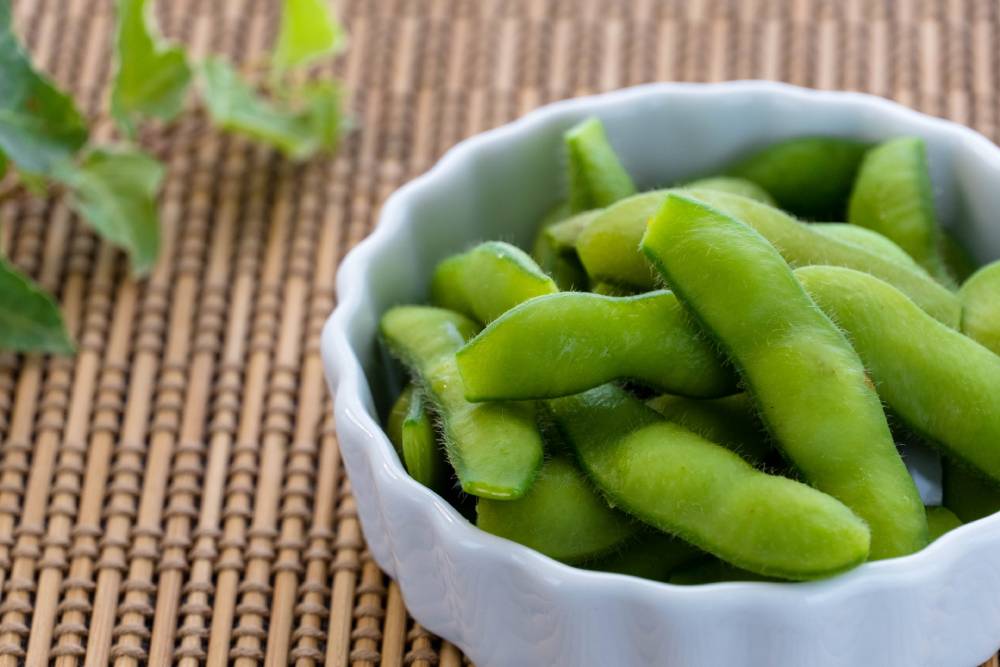
- English: edamame beans
- Kanji: 枝豆
- Hiragana: えだまめ
- Katakana: エダマメ
- Pronunciation: edamame
Edamame beans and soybeans are the same soybeans, but edamame beans are harvested earlier. In other words, edamame beans are young soybeans.
Edamame beans are in season in June, July, and August. You’ll find edamame beans at supermarkets and grocery stores in these months for 400 – 500 JPY.
The recipe is super simple, just boil with salt.
4. Chilled Ramen Noodles
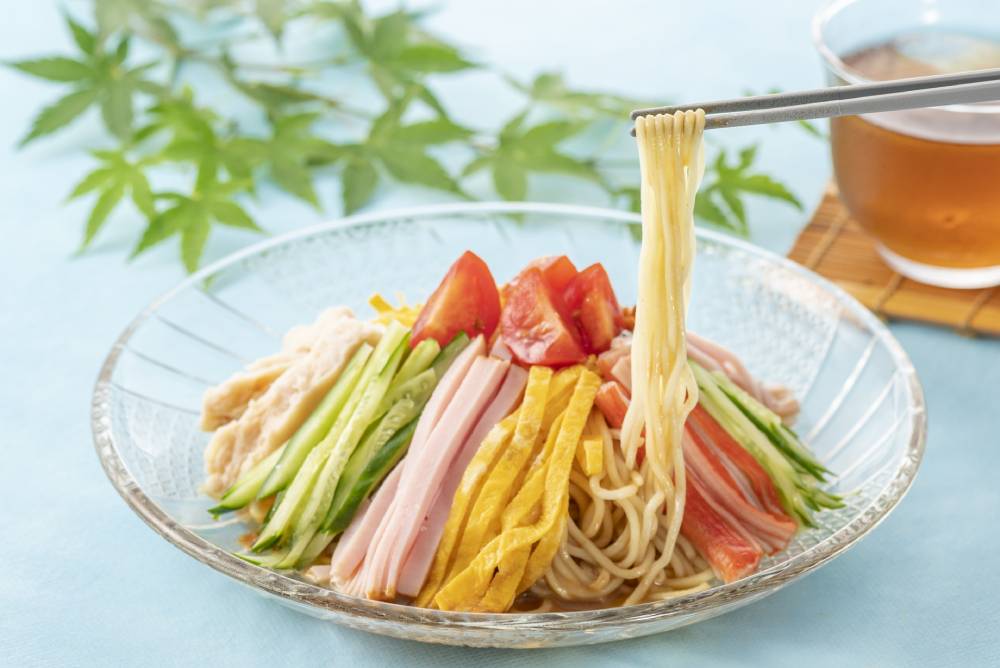
- English: chilled ramen noodles
- Kanji: 冷し中華
- Hiragana: ひやしちゅうか
- Pronunciation: hiyashi chuka
Chilled ramen noodles with various colorful toppings are called “hiyashi chuka” in Japanese. The typical toppings are strips of egg crepes, cucumber, ham, and tomato. The toppings may differ depending on the restaurants and households.
The typical dressing poured over the noodles and toppings is a slightly sour soy sauce-based dressing. Likewise, sesame dressing is also popular. Some people like to add “karashi” (Japanese mustard) or mayonnaise.
You can purchase prepared “hiyashi chuka” at convenience stores and grocery stores, or have it at a ramen shop. If you want to cook it, the noodles and dressing are packed together and sold at grocery stores for about 200 JPY. Here is the recipe.
3. Shaved Ice
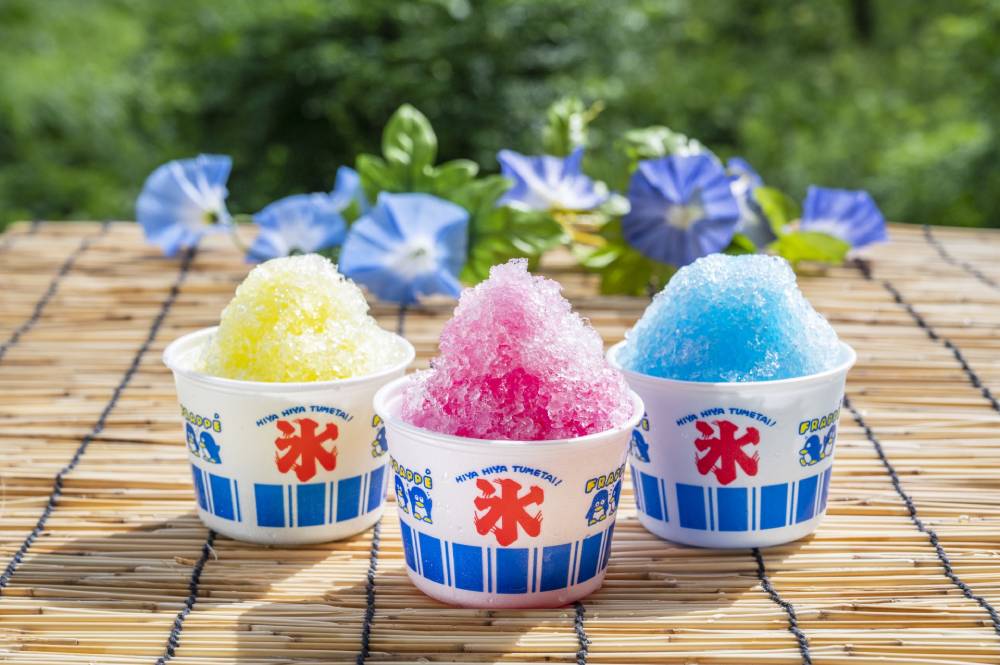
- English: shaved ice
- Kanji:かき氷
- Hiragana: かきごおり
- Pronunciation: kakigori
Shaved ice, “kakigori“, is a great way to cool down in a hot summer. It is a frozen dessert that is made by shaving or crushing ice flavored with syrup. The typical flavor of the syrup is strawberry, lemon, melon, and blue Hawaii. Some are served with “anko” (red bean paste) or condensed milk.
“Kakigori” is a popular food stall snack at a summer festival. You can also find it at convenience stores and grocery stores.
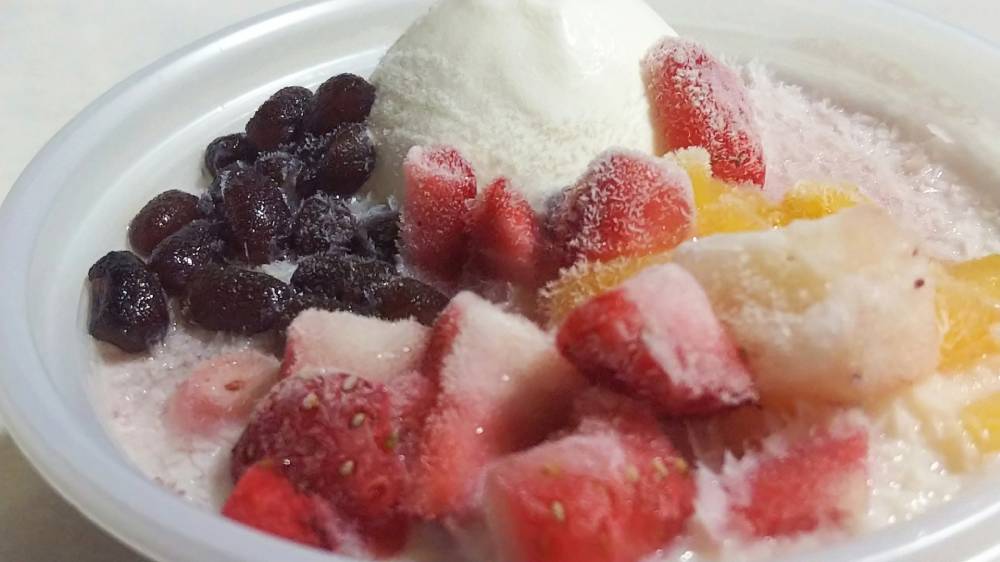
One of the popular shaved ice is “Shiro Kuma Ice (しろくまアイス)”. It is shaved ice with condensed milk and fruit toppings originally from Kagoshima prefecture. It is served at restaurants and cafes in Kagoshima, or sold at convenience stores or supermarkets outside of Kagoshima.
2. Somen/Hiyamugi
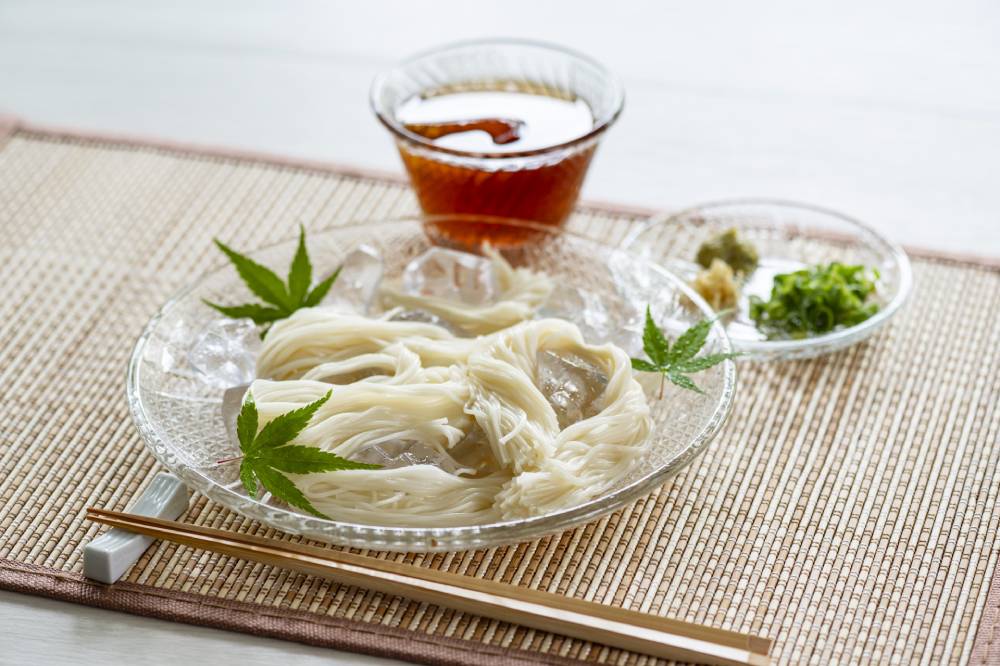
- English: wheat flour noodle
- Kanji: 素麺/冷や麦
- Hiragana: そうめん/ひやむぎ
- Pronunciation: somen/hiyamugi
Somen is a very thin noodle made of wheat flour. It is served cold and usually comes with soup and condiments. The common condiments are green onion, wasabi, ginger, shiso leaves, and myoga ginger.
Somen and Hiyamugi are made from the same ingredients and they look the same, but they are different. Somen is usually more popular and common than hiyamugi. The difference between them is the thickness of dried noodles, as shown below.
- Somen: Long diameter of less than 1.3 mm
- Hiyamugi: Long diameter of 1.3 mm or more and less than 1.7 mm
“Nagashi-somen” will be one of the fun experiences of Japanese summer. It means flowing noodles, small portions of somen noodles come sliding down on a half-pipe cut bamboo with water. People use chopsticks to catch the slippery noodles to eat.
Other than that, prepared somen is available at convenience stores for 400 – 500 JPY. Dried somen/hiyamugi noodles are available at grocery stores for home cooking. Here is the recipe.
1. Watermelon

- English: watermelon
- Kanji: 西瓜
- Hiragana: すいか
- Katakana: スイカ
- Pronunciation: suika
Watermelon is the king of summer fruits in Japan. It is an ideal fruit for hydration as it contains a lot of water. In addition, it contains a good balance of nutrients like vitamin A, B1, B2, C, minerals such as calcium, phosphorus, iron, and potassium.
A whole watermelon is available at grocery stores in summer for about 1000 JPY. Or a pre-cut single-serving package may be a good snack or dessert even for tourists.
One of the Japanese beach games in summer is “Suika wari“. “Suika wari” is watermelon smashing with a stick while blindfolded. The group around them shouts out directions so that they can strike the watermelon.
Summary
| 1 | watermelon |
| 2 | somen/hiyamugi |
| 3 | shaved ice |
| 4 | chilled ramen noodles |
| 5 | edamame |
| 6 | corn |
| 7 | chilled tofu |
| 8 | fresh water eel |
| 9 | red bean jelly |
| 10 | jelly noodles |

Thank you for reading!
Have you had everything on the ranking? What do you like best?
Reference: Takii Shubyo
What’s in Season & MUST Eat in Summer in Japan? 8 Seasonal Veggies(Part 1 of 3)
 Comment
Comment

 Home
Home 01/12/2023
01/12/2023